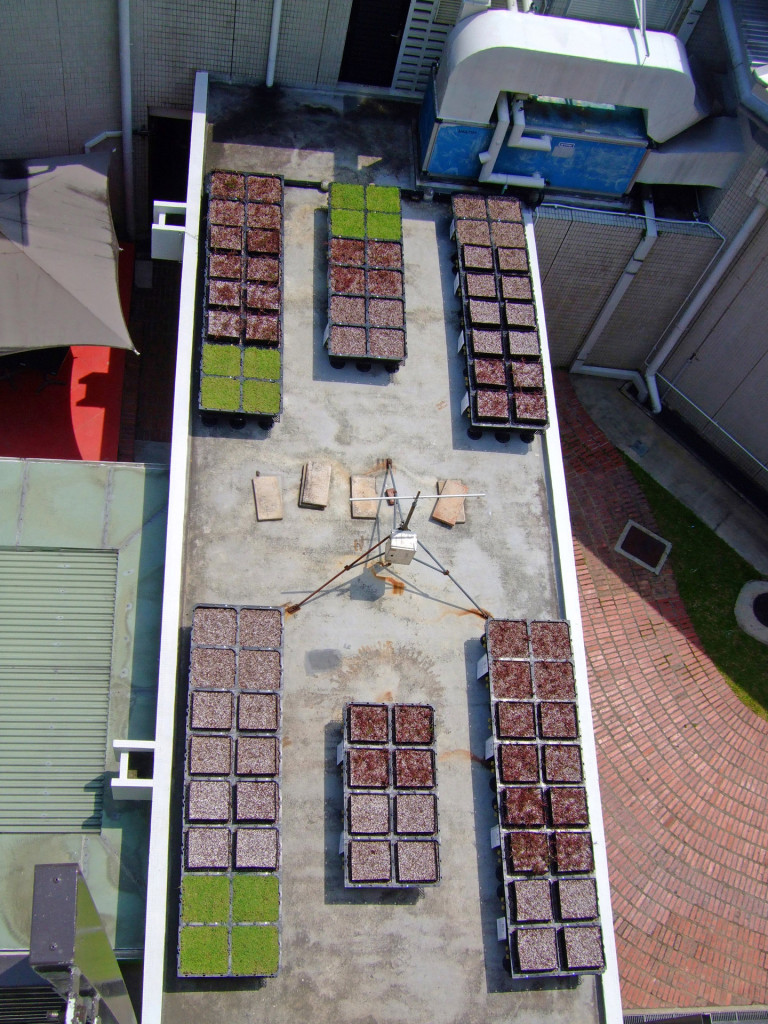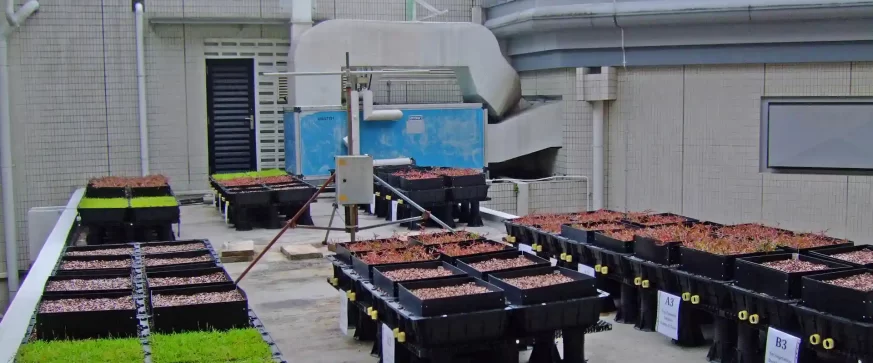A joint NUS-Elmich research on extensive green roofs at NUS Department of Geography, using theElmich MEP Tray System, has yielded valuable insight into how an extensive green roof can function as a means of urban storm water management and also as an effective mechanism for removal of trace metals.

The research shows that on average, rainfall retention for vegetated plots using the MEP trays was about 62.3%, a higher water retention capacity compared with plots with just planting media at the same height of substrate. The research also sheds light into how the vegetation can have positive influence on increasing the time of water penetration in the planting media/substrate. For trace metal filtering, whilst plants can help to remove, transfer, stabilize and/or degrade contaminants in soil, sediment and water, the study shows that height of planting media rather than the presence of vegetation influenced a greater retention of trace metals. Planting media depth at 75mm was seen to be sufficient and most effective for retaining metals.

In the past decade, a very fast pace of urbanisation has severely impact our environment, such as excess runoff leading to subsequent flooding and rising air pollution which contributes to poorer rainwater quality. Both are very serious issues and need to be urgently addressed in academic research so that more effective and sustainable solutions may be developed and implemented to counter these pertinent problems.
The study suggests that if sufficiently implemented in an urban area, green roof systems can improve storm water management through the absorption of rainfall, thus reducing volume of immediate discharge. The roofs also act as natural filters whereby heavy metals in the rainwater will be retained and treated in the substrate instead of being discharged into drains and rivers.
Click here to know more about MEP® Tray



